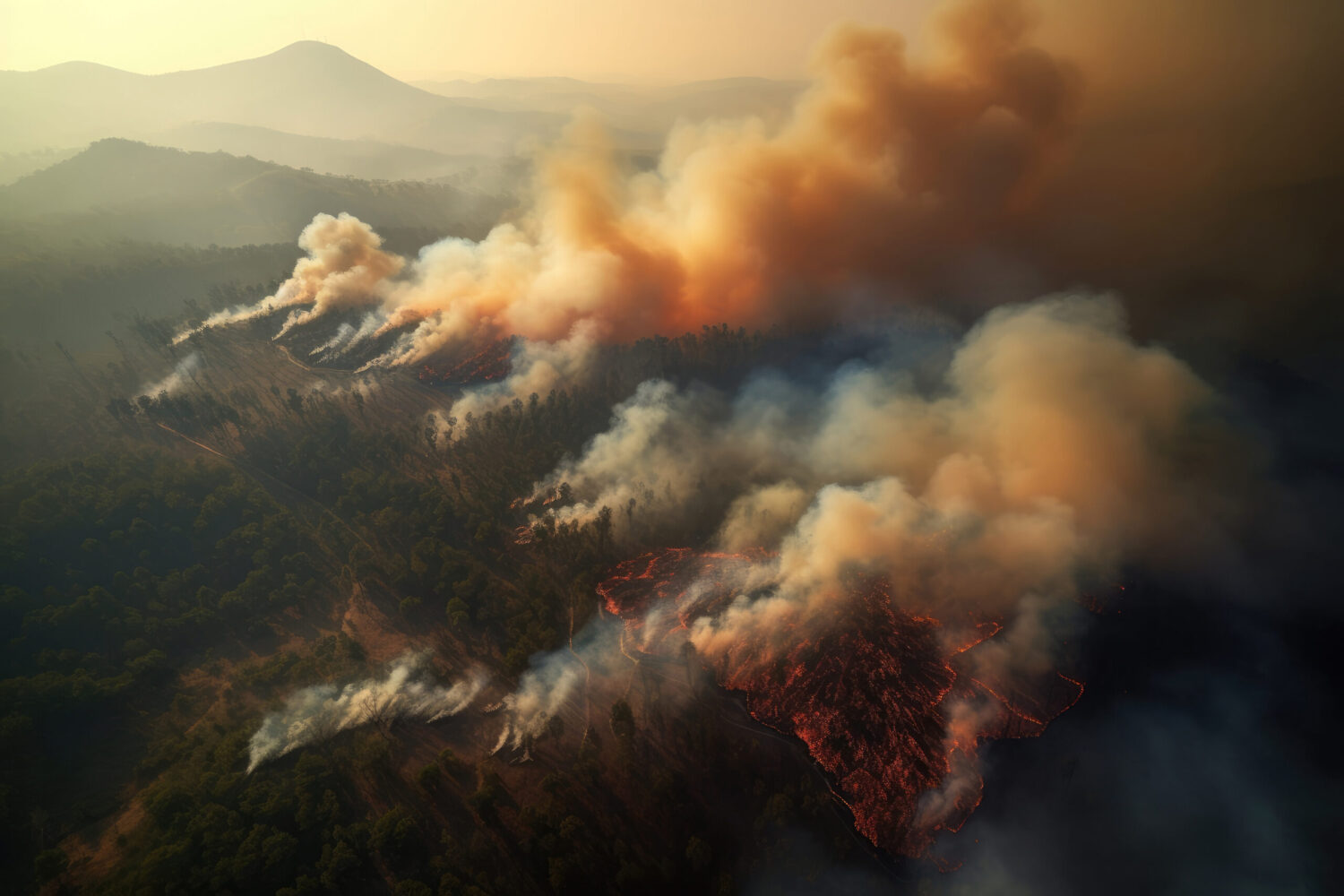
Industry News
News
Forest fires benefit white and red pine regeneration: Quebec study
Research shows prescribed fire is effective solution to curb dramatic decline of at-risk pine trees in Quebec
September 15, 2023 By Mitacs
 Aerial photography of a massive forest fire in Canada in 2023. Photo: Adobe Stock.
Aerial photography of a massive forest fire in Canada in 2023. Photo: Adobe Stock. As record-setting forest fires continue to affect all Canadian provinces and territories, a team of Quebec researchers have come up with proof that, despite their devastating effect, not all forest fires are bad. In fact, at the right intensity and in the right amount, they are needed to help preserve at-risk tree species like red and white pine, a prime source of lumber which is currently endangered in the province.
“Over past centuries, we’ve seen a significant decline in white and red pine forests in Quebec due to a climate cooling phenomenon known as the little ice age, that was later accentuated by intensive logging following colonization and a change in forest fire dynamics arising from the systematic suppression of fires by firefighting organizations,” said Mélanie Gilles-Nicoletti, a Mitacs intern and PhD candidate in forest ecology at Université du Québec en Abitibi-Témiscamingue (UQAT), who participated in a leading forestry research team at the Quebec Centre for Education and Research in Forestry (CERFO) as part of her internship.
“In order to stop the regression, we need to find the best way to help seedlings thrive,” she added.
Gilles-Nicoletti – whose internship is funded by Mitacs, a national innovation organization that helps solve business challenges with research solutions from academic institutions, and the Ministère de l’Économie, de l’Innovation et de l’Énergie du Québec (MEIE) – is working to determine whether shelterwood cuts, a technique used by Quebec forestry services to remove undesired species and thin the forest canopy in order to promote seedling growth, is a good forestry management practice to preserve red and white pine.
“What we’re finding is that because red and white pine trees have adapted to surface fire over time, their seedlings thrive in the physical conditions left behind following a fire and therefore field preparation with prescribed burning could be a good stimulus for seedling growth to add to the traditional approach of shelterwood cuts,” she said, noting that her ultimate goal is to see the natural balance returned to Quebec forests.
Preserving white and red pine is important because both species are integral to eastern Canada’s ecosystem. Red pine is a heavier, stronger and denser wood that is excellent for flooring, paneling, roofing and truck decking. White pine is softer and is often used for pulp, or to make furniture, crates, match sticks and boats.
The research team’s work is based on extensive field studies conducted in regions of Quebec and Ontario previously affected by forest fire — including Opémican and La Mauricie National Parks in Quebec and Finlayson Point Provincial Park in Ontario — during which the team spent several months camping in the forest to take an inventory of seedlings, examine the biodiversity of the undergrowth and characterize the seed bed and soil properties. The goal is to determine what accounts for the ideal white and red pine growing conditions naturally following a fire, by studying characteristics such as soil depth and nutrient content in order to target regeneration cutting and field preparation by prescribed burning which will cause the same conditions.
Sylvain Gagnon, who is pursuing his master’s in forestry ecology at UQAT and who completed a Mitacs internship in 2022, is using his post-fire sampling data to determine the best fire intensity windows required to help red and white pine seedlings grow. To do so, he is applying an existing composite burn index to characterize changes to vegetation and topography post-fire.
“Our research clearly shows that intentional or prescribed fire in the right intensity appears to be a more effective way to regenerate white and red pine species and yet, right now, prescribed fires are not used in Quebec forestry management to the extent that they should be,” said Gagnon.
Specifically, he found that although other parts of Canada use low intensity fires for forest management, prescribed fires in Quebec need to reach medium intensity in order to effectively stimulate white and red pine growth.
“My findings will show how to control prescribed fires in order to reach a specific target, so that the ideal growing conditions are met and we will have much more evident pine seedling density three to five years later,” explained Gagnon.
“Sometimes, it can be okay to play with fire and it’s my hope that the more we understand about how fire contributes to ideal growing conditions, the more red and white pine trees we will have in Quebec forests over the next decade,” he said.
Print this page